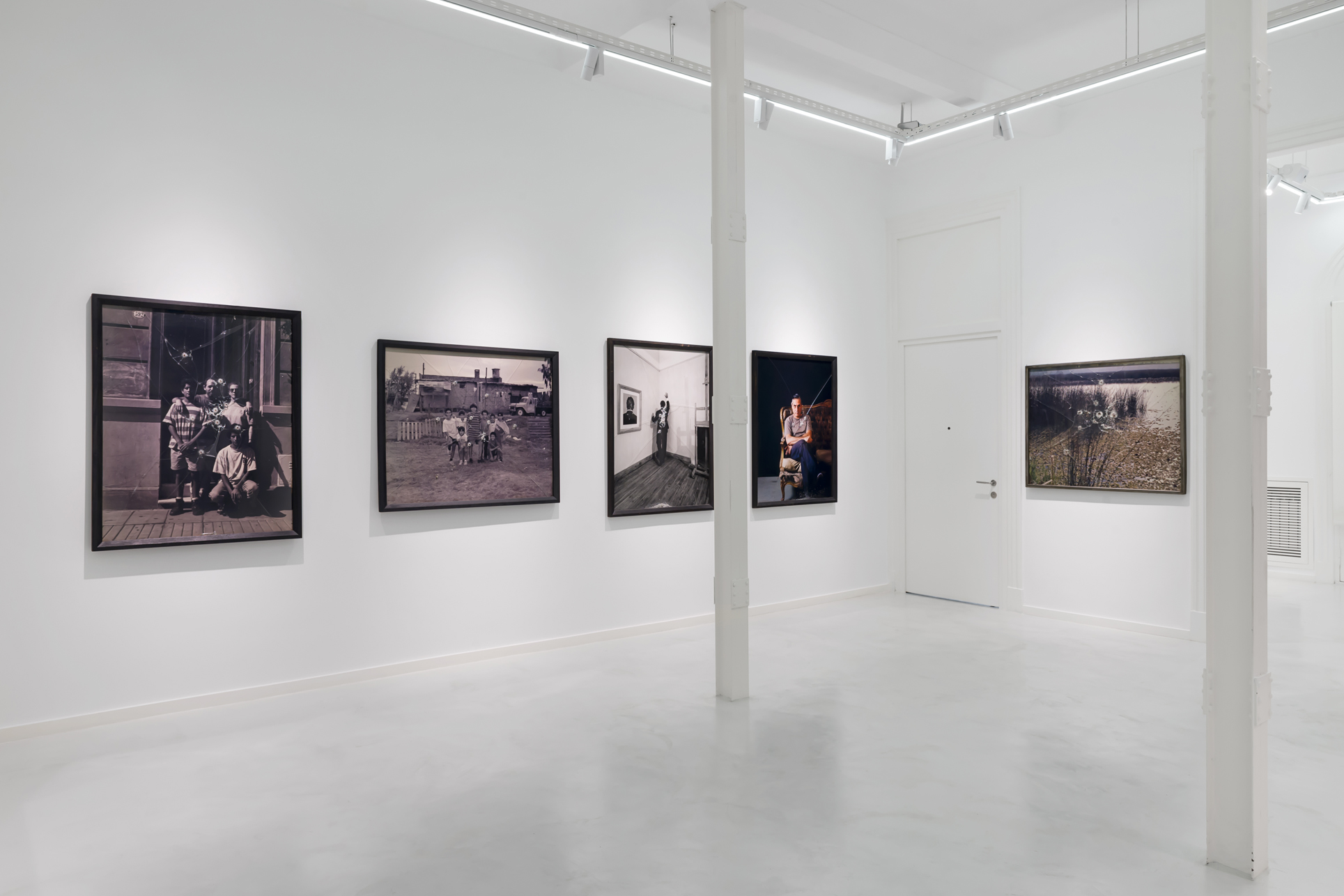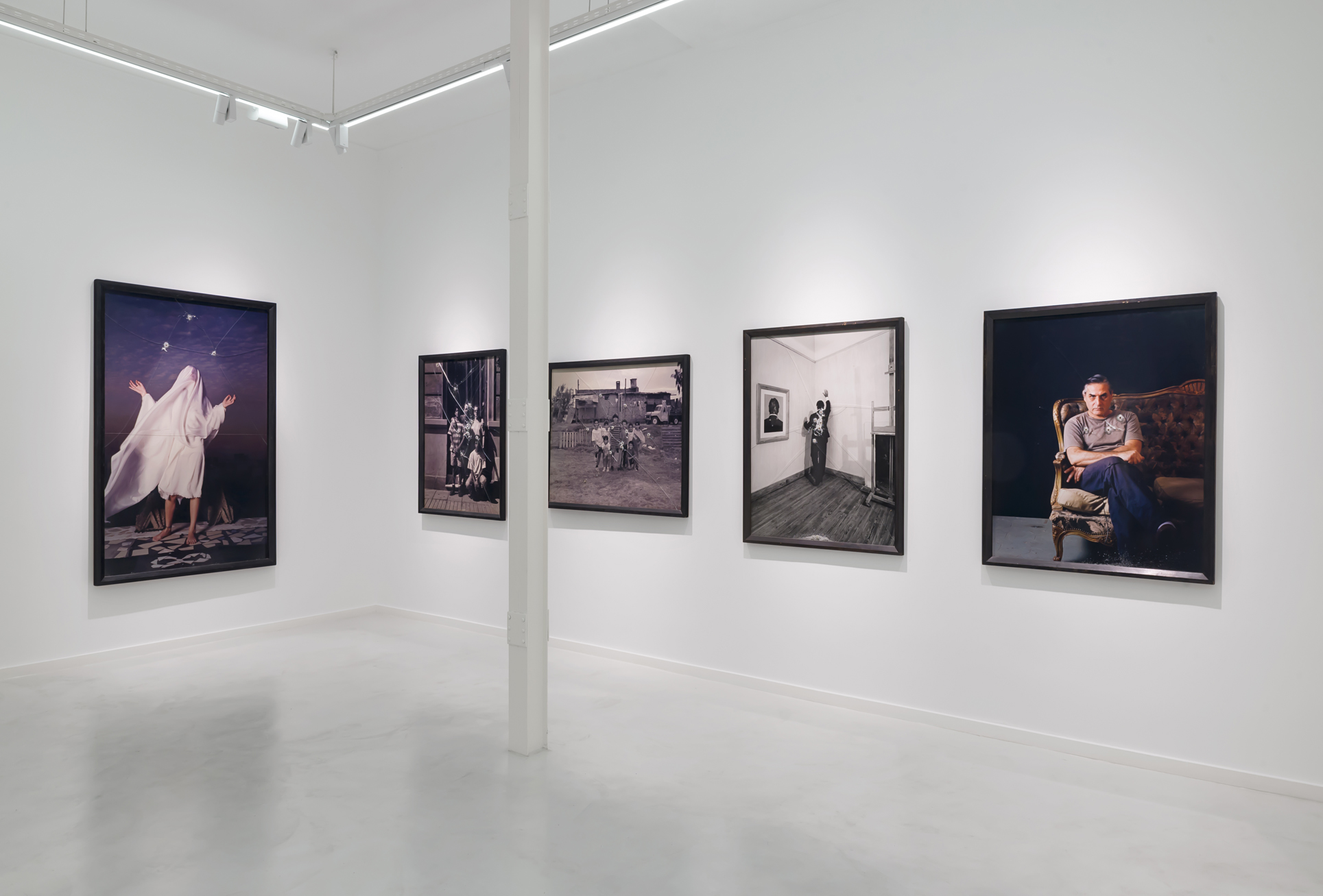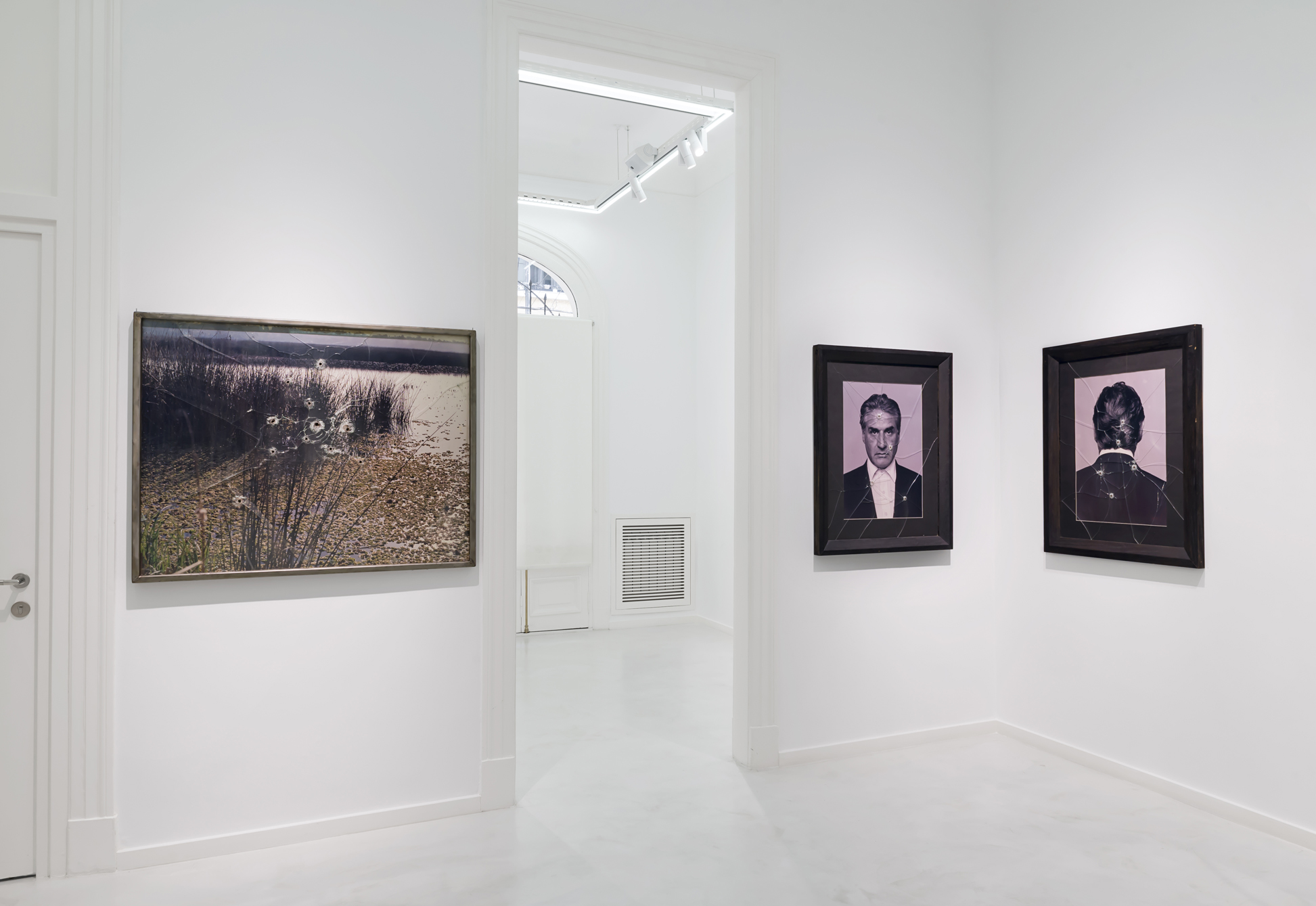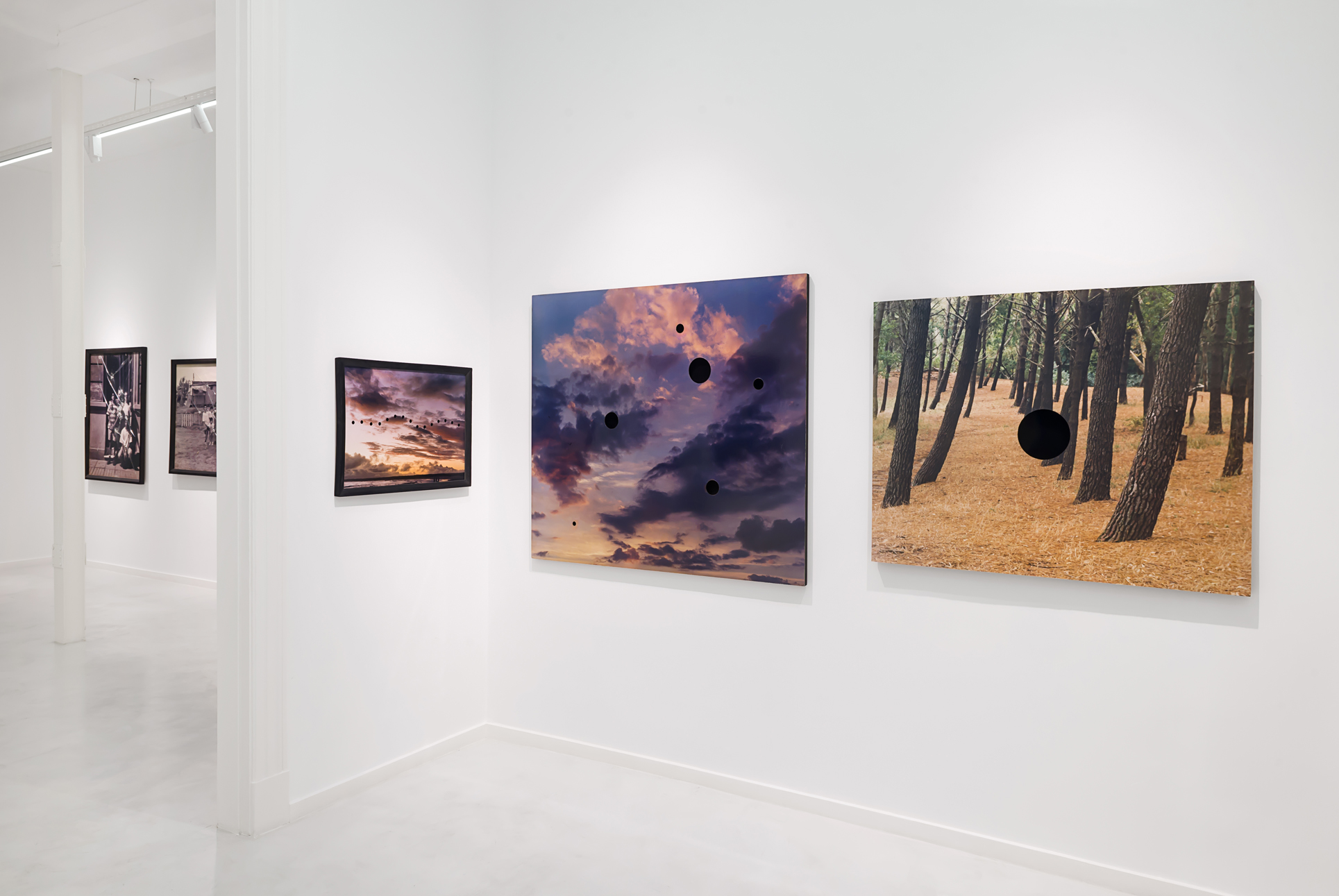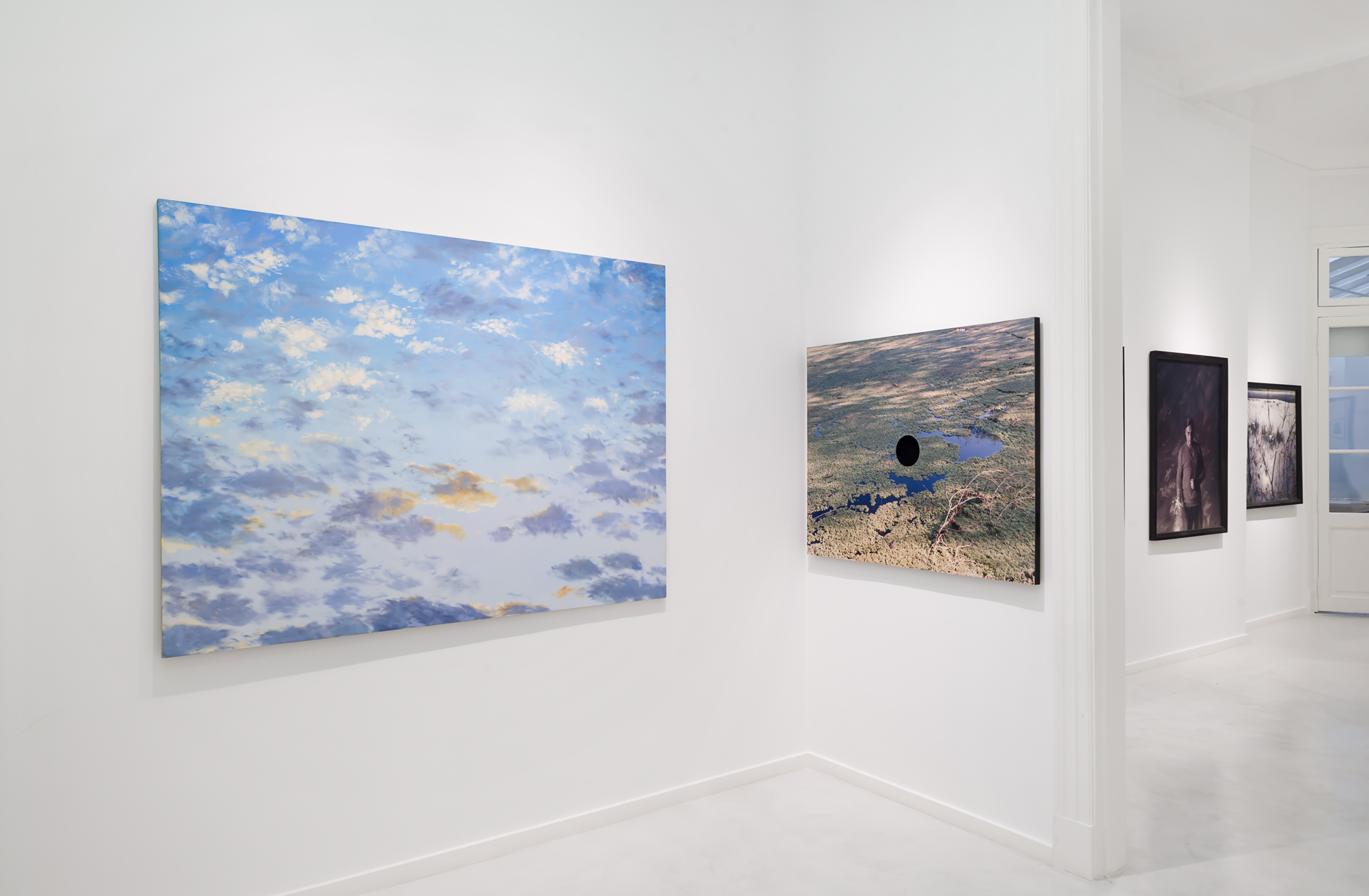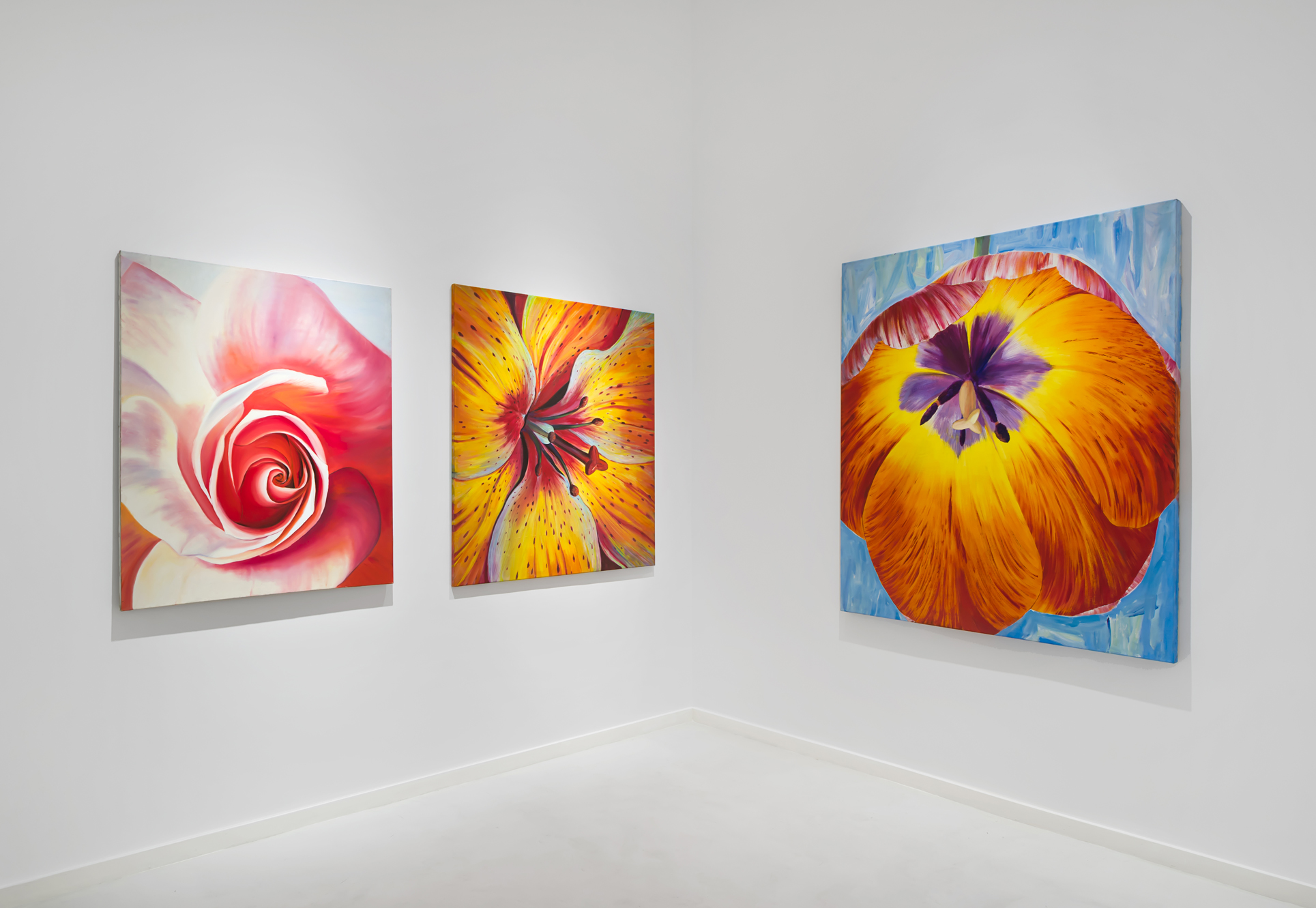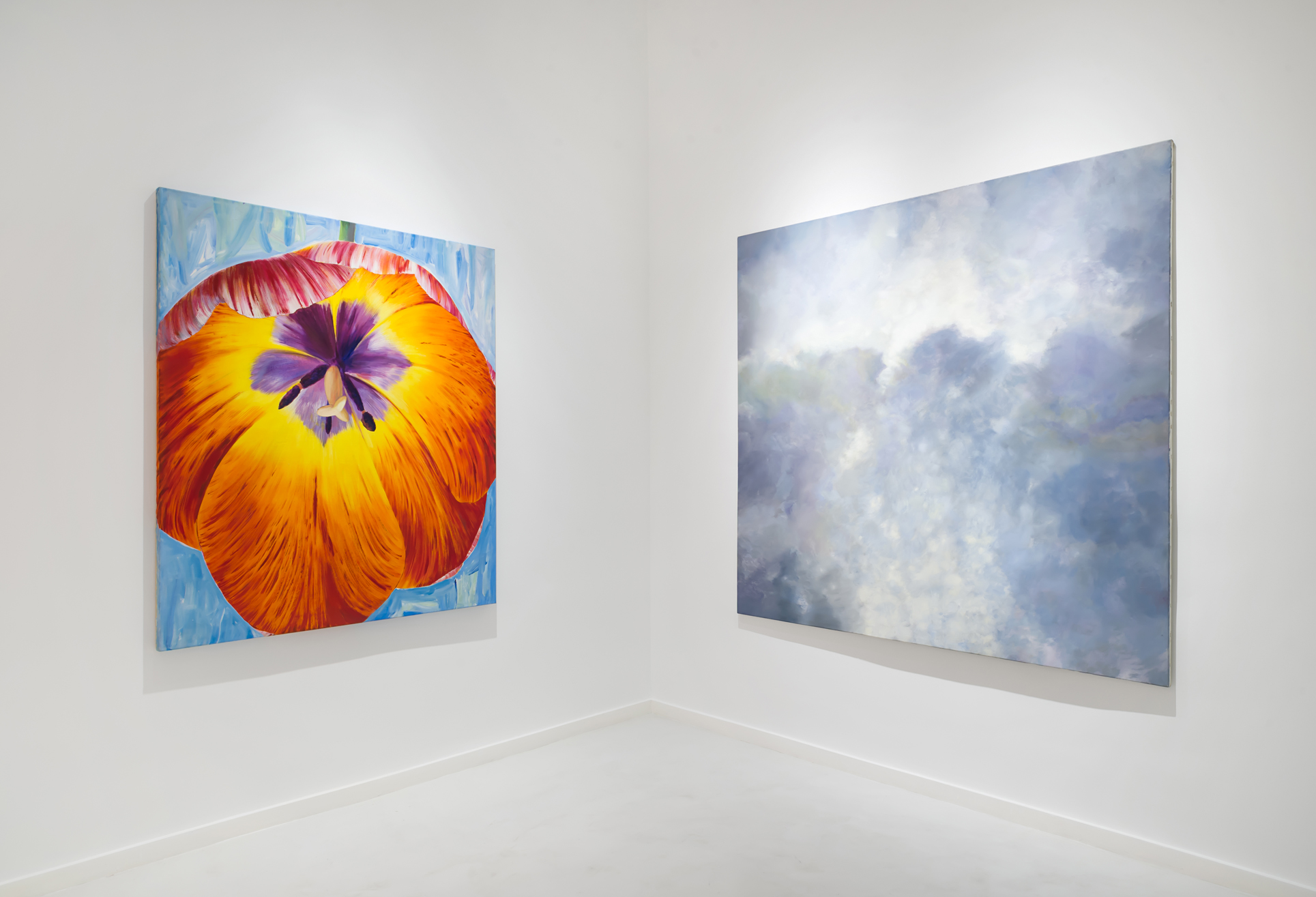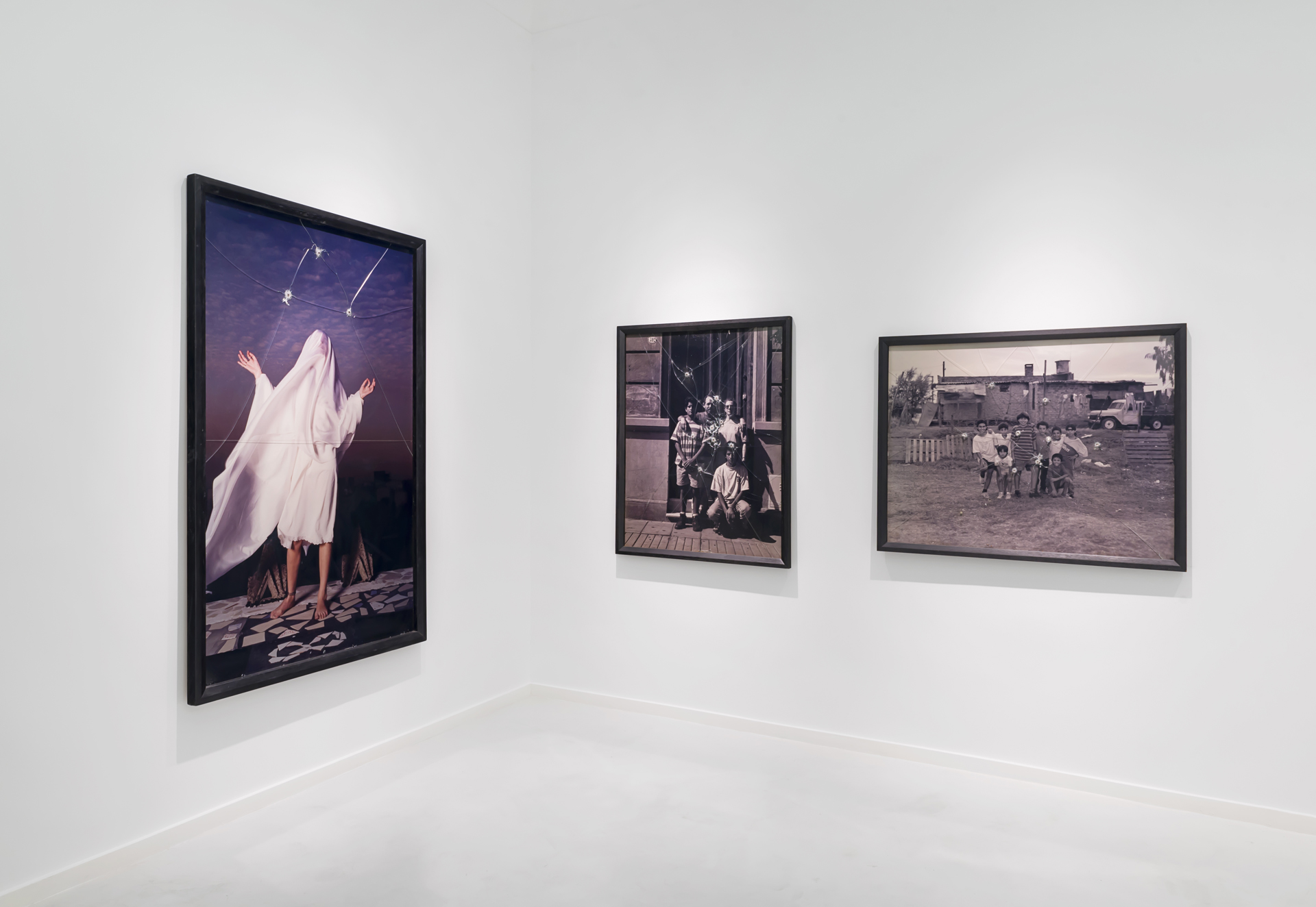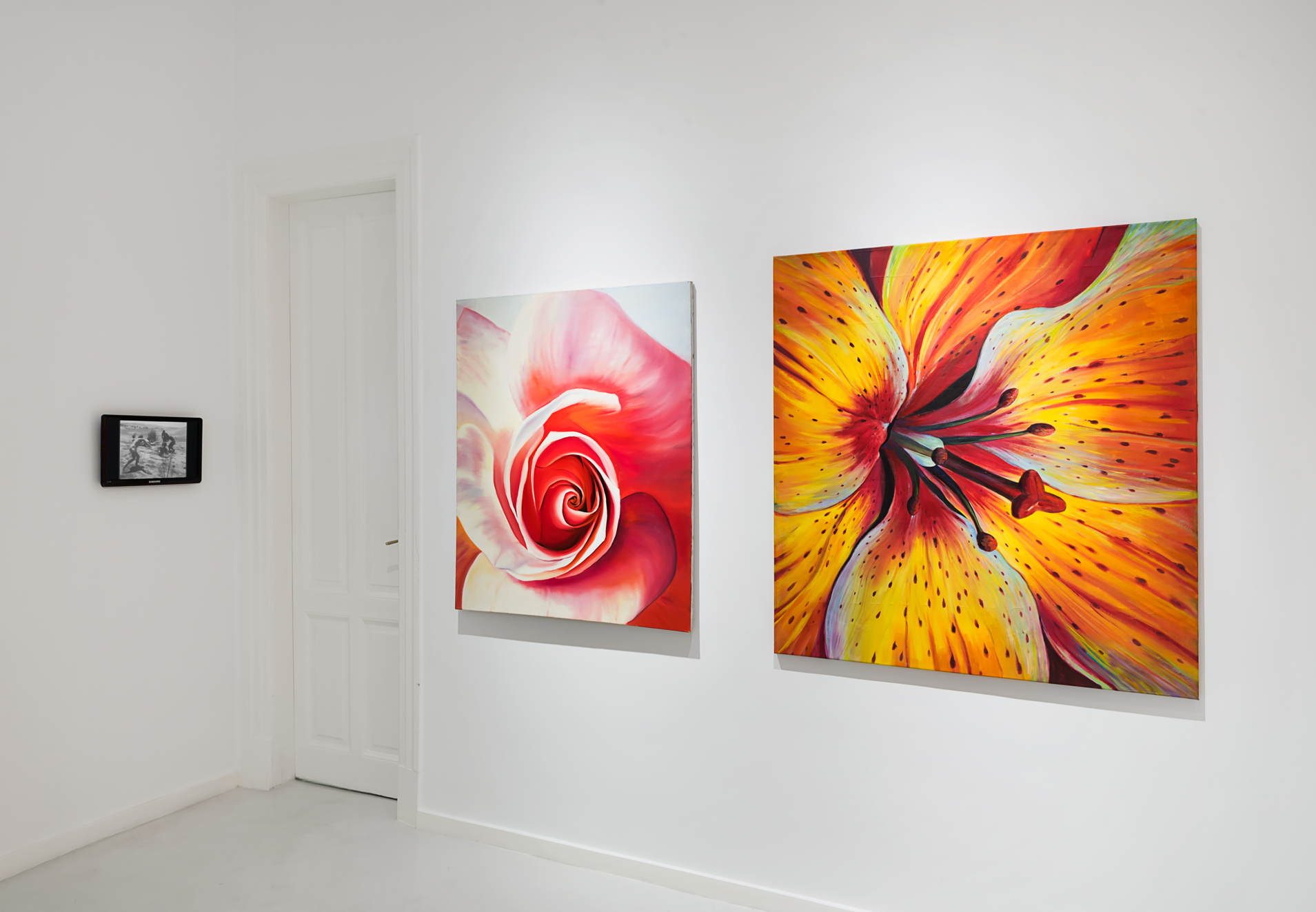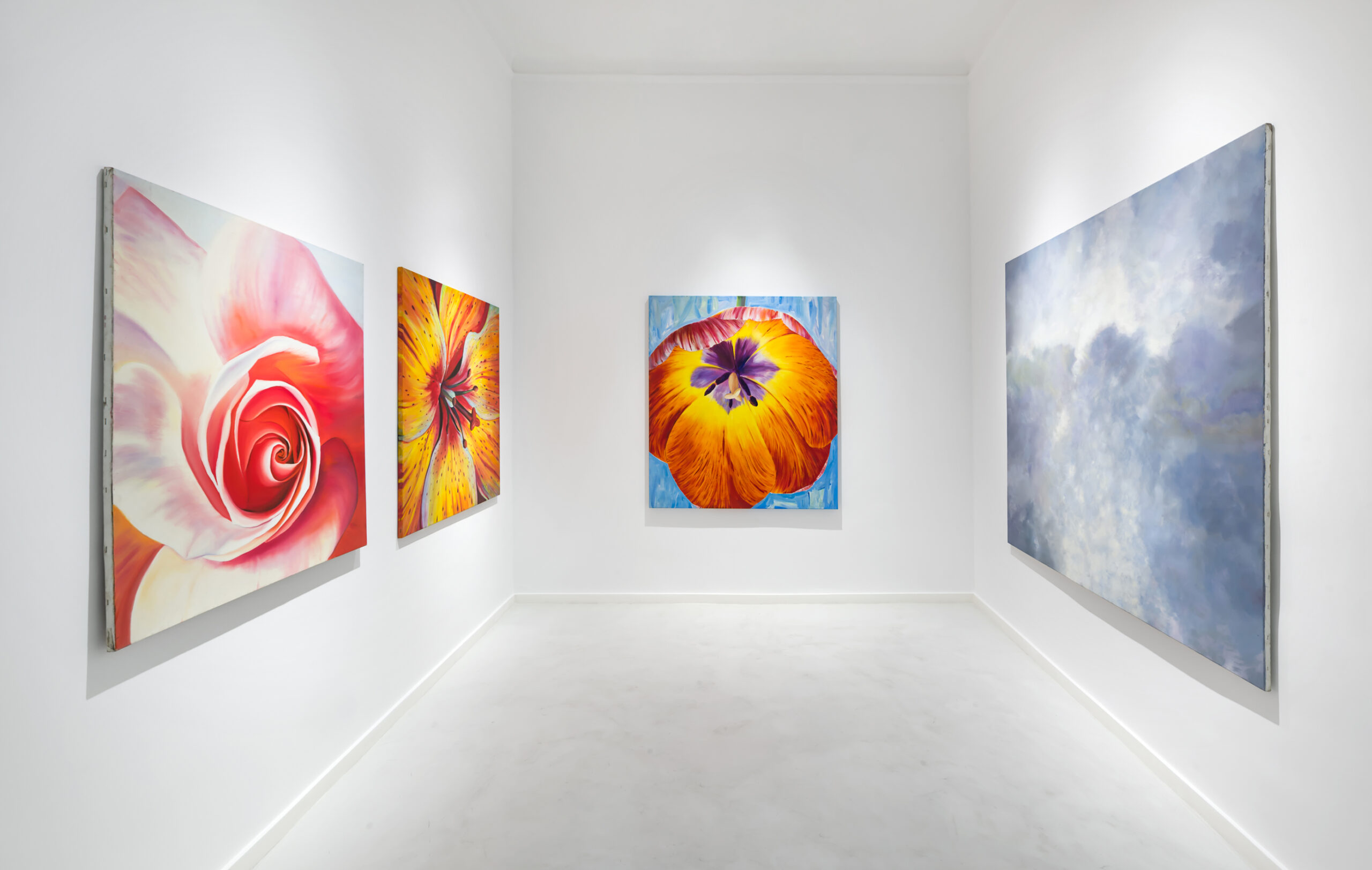Hotel de Paso, Oscar Bony
Curated by Marcelo Pacheco | Text by Santiago Villanueva | 14 de agosto
Orientation is a Transit Hotel
Santiago Villanueva
*
Orientation is one of the words that best guides me through the various moments of Oscar Bony’s work (1941-2002). It involves tilting to one side and then the other, akin to the sensation at the start of a fall and, instantly, regaining stability. This sense of flirtation, of insinuating oneself, of presenting without development, was a commentary for each moment: tendency is the most contradictory place to inhabit, but also the one suited to a voice that can be intensified. Bony saw minimalism, conceptualism, painting, and photography in this way. For each moment, avant-garde also meant evading the idea of a personal style.
*
Bony spoke about discontinuity in his work, of a fragment of discontinuity. He salvaged the possibility of not choosing, of remaining in a state of doubt, of not advancing, of proposing and stopping. In this sense, his production leaned towards a passive idea of avant-garde, where reaching the point of intensity and concept was simultaneously the moment to abandon: to sink in many directions at once. He said that this same sensation was what Buenos Aires produced in him: a Spanish house, a French building, one from the 50s modernism, a postmodern one. He defined it as a jumble. He likely took something from Luis Felipe Noé’s concept of “chaos.” “I was a romantic fool who thought he was in Fontainebleau. The photos I show really move me; that helpless, skinny, angry boy is Bony,” he says in an interview with Julio Sanchez in 1993. His words contrast with the certainty of his work’s development in the late 80s and 90s. The precision of the shots, the objective conceptualization in some of his appearances, contrasts with the return to an idealized and romanticized image of the artist, embracing and thinking around death and, above all, suicide.
*
When Marcelo Pacheco began his text for Bony’s exhibition catalog at Malba, he said: “I try to orient myself.” It seems like a beginning from the haze of never reaching a conclusion or a clear hypothesis, a certainty that identifies an extensive body of work spanning several decades, as a whole or a coherence. I would like to consider here, in the same vein, his work as an incoherent ensemble, which also leads me to affirm avant-garde as disappointment. I also think that the ability to orient oneself and disorient oneself was in Bony a possibility to invent a method. The works from the last years of his life allow me to reveal something of this method and rethink his work from previous decades.
Orientation can sometimes mean arriving at a concrete material, a word, or simply a repeated action. In Queer Phenomenology: Orientations, Objects, Others (2006), Sara Ahmed asks: “What does it mean to be oriented? How do we begin to know or feel where we are, or even where we are going, aligning ourselves with the characteristics of the territories we inhabit, the sky around us, or the imaginary lines that traverse maps? How do we know which way to turn to reach our destination?” These are all questions organic to Bony, from the geographical coordinates of a sky to the intention of finding an objective sense to his practice under the necessity of allowing new beginnings. Ahmed talks about the familiar as a way of feeling space and how it imprints on bodies. Bony had worked on this sense in some of his 60s projects, approaches between conceptualism and minimalism, but always focused on understanding a space. The familiar is the configuration of the effect of experience, which measures the reach and contact with objects. Approaching is a way of reorienting the familiar. Ahmed also speaks of migration as a process of disorientation and reorientation, something that could extend beyond Bony’s work to the movements or displacements between the different cities he lived in or visited, emphasizing the idea of travel as a permanent state in the formation and opening of an artist. This displacement of bodies coming and going determines ways of inhabiting and thinking about spaces. Movement or migration is the sensation of what is unstable, and in that sense, Bony’s work could be considered, beyond geographic location, as a migratory practice. Ahmed refers to that space that falls: “When something is out of alignment, it is not just that the thing seems oblique, but that the world itself may seem tilted, which disorients the image and even displaces the body.” In a 1984 work, Bony had already tilted the plane of a painted sky, which from the lower right corner was attached by a thread to a small boat. He did the same in a series of works from 1992 and 1993, titled Memory Series, where the uses of photography appear through enlargement, manipulation, and staging with another series of objects. For Bony, photography was always the space of greatest security for disorientation, for losing oneself. Orientation is a transit hotel. Bony viewed artistic practice as a transit hotel and the artist as a “visitor-artist,” where there is no sense of belonging.
*
The short film Submarino Amarillo, which Bony filmed in 1965, evokes something of the dizziness inherent in being disoriented. A group of young people, including Pablo Suárez, Roberto Jacoby, and his little cousin, run naked along the beaches of Villa Gesell without an apparent destination, merely as a simple game among their bodies that evokes carefree behavior and adolescent eroticism. Nature reappears in many images of Bony’s work: in his well-known skies from the 70s, but also in works like Still Life (1996) and The Spiderweb (c. 1998), where shots are made on photographs of landscapes, possibly from Corrientes or Misiones. The image of the spiderweb appears, which can be thought of not only for this image but for all the Suicides and Executions. Contemplation of Absence 3 (1997) presents again a beach landscape, where the silhouettes of three people appear. Bony intervenes in the image with perforations with velvet backgrounds, creating a zigzagging line across the sky, confirming his hypothesis that Lucio Fontana’s slashes should have been horizontal, like the line of the Pampas horizon. Bony’s work is filled with punctuation marks constantly reconfiguring the image, annoying it and making it more receptive.
*
In 1959, Franco Di Segni, an artist and disciple of Enrique Pichon-Rivière, published a very particular book for thinking about the relationship between psychoanalytic culture and the analysis of a work of art. In Death and Destruction of a Sammer Makarius Painting, Di Segni intervenes the canvas from the perspective of analytical pressure, from the insistence on turning it around, looking again: ruining it with the eyes. I think of this book, this method, to look again at Bony. Interpretation, awareness, the construction of a coherence network is what traverses a gesture; not the shot, not the perforation, not the dot. Di Segni proposed to a group of people to meet periodically to find other possible interpretations in a Makarius canvas that would detach it from aspects related to the tradition and code of art history. The insistence on the image allowed approaching the same place with different words, where collective experience took a different form over time. The aim was to try out a vocabulary that projects a perforation and traverses the commonplace where the work might remain.
A shot marks a distance between what the artist decides to do and what it can provoke. A distance between intention and mark. The “important” space in Bony’s shootings and suicides is the trajectory of the projectile. The edge is not the frame but the fact that works can be thought of from the inside out. The center of the image, where the bullet perforates, is the edge, and the limits of the work are its centers. In the plural, because they variably build the possibility of containing spatial, formal, economic, and class information. The missing part is that edge, the perforation. What disappears from the image is a point, which does not alter a possible reading, only impacts interpretations. Bony distracts us with the possible metaphorical readings that repetition produces when viewing his work; the literalness generates a pause, a break, to think of all possible strategies to escape it. The viewer who arrives at a personal reading is the one who forgets the action and effect to focus on the distance.
*
In a 1994 interview with Hernan Ameijeiras, Bony confesses that he was affected by the death of Liliana Maresca, which occurred that same year, despite not being very close friends or frequenting common spaces much. Bony photographed her funeral, which was like a performance, as a tribute. Maresca had died after being HIV-positive and facing a fragile state of health in the last years of her life. It was a year before Bony began creating his Suicides and Executions and the same year that Miguel Harte created the work Surface Aspirators: an aluminum sheet with a Formica surface around it, with about six holes from which small drops of polyester resin oozed. Harte’s perforations on aluminum coincide with Bony’s perforations on glass and photography, though the former’s imagery later focused on the hole as an entry and exit space, with a more sexual than violent tint, like small gloryholes of fantasies.
*
In 1996, Federico Klemm dedicated one of his episodes of El banquete telemático to the exhibition Fusilamientos y suicidios curated by Bony at his Foundation. Klemm, amidst hurried and interrupted descriptions, refers to the attire of the characters in the work La familia obrera from 1968: “All classes dress up as best they can for a social event, just as the working masses celebrated Perón or when they faced the Russian czar, and even more so to present themselves in public, which does not distort their social identity.” Klemm connects moments, focusing more on the surface of things, which is why he takes risks. Suddenly he says, “A weapon in the hands of a fool can turn them into a murderer, a weapon in the hands of an artist can produce a creative act.” He then looks at the camera, aims, and fires, breaking the lens and simulating the action of Bony himself. Once seated in the “private” lounge, Bony confesses that “one needs to feel like a child to do tremendous things,” reflecting on the idea of judgment and his works as a product of the times: “In a disintegrating society, in a century’s end coming too fast, it seems necessary to end the postmodern, to end the light, and to assert.” “Well, the light is almost over…” replies Klemm. “Fortunately,” concludes Bony. That same year, in the catalog of the Bienal del Mercosur, he referred to the impacts of his shots: “As it’s broken, so it remains.” Bony’s actions are precise, but also impossible to conceal; each shot is an indelible mark on the work.
A year later, in 1997, when he created La barrita de Quilmes and La familia del barrio, it seems he is aiming at his own working-class family. It is almost a repentance, a shooting at the very gesture of past decades, where the feelings of humiliation and abuse of power appear, as Pacheco points out. That year, the rooms of the Centro Cultural Recoleta inaugurated an exhibition that also, but in a different way, closed a decade full of dire consequences for our lives, which would become even more apparent in the years to come. It was Jorge Gumier Maier’s El tao del arte, opening as Bony completed this series of shootings that imprinted new meanings onto his previous work, like an ouroboros gradually stopping and abandoning its motion.
